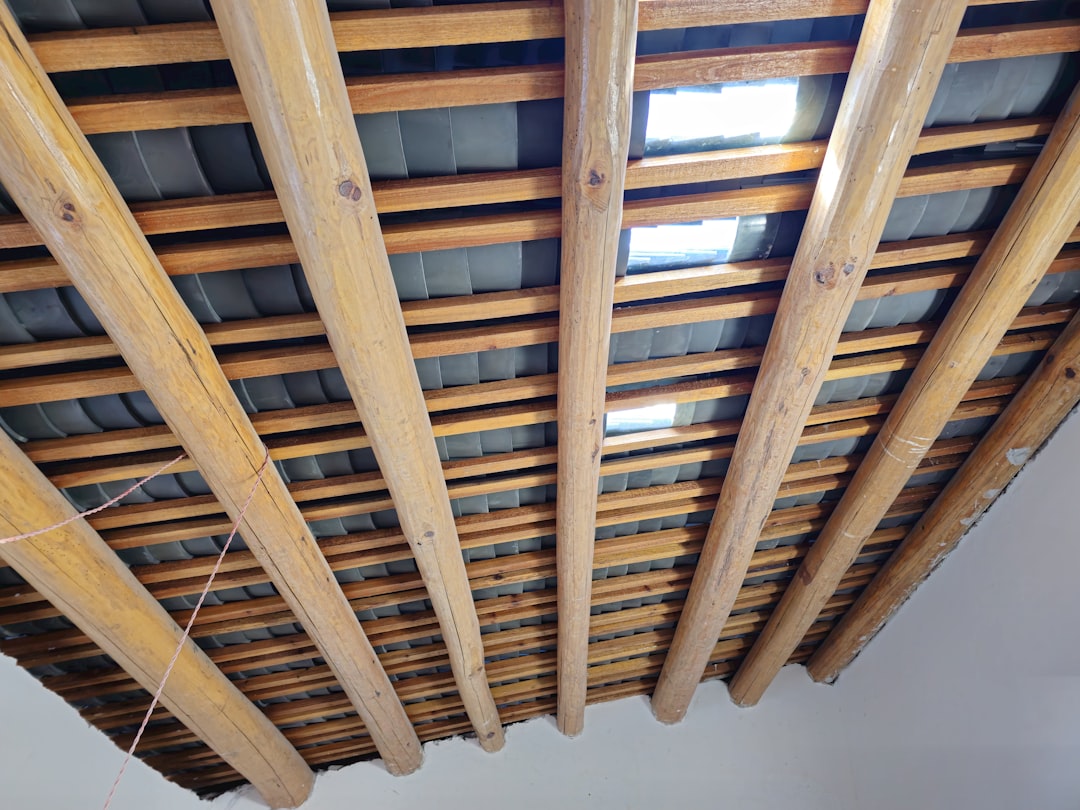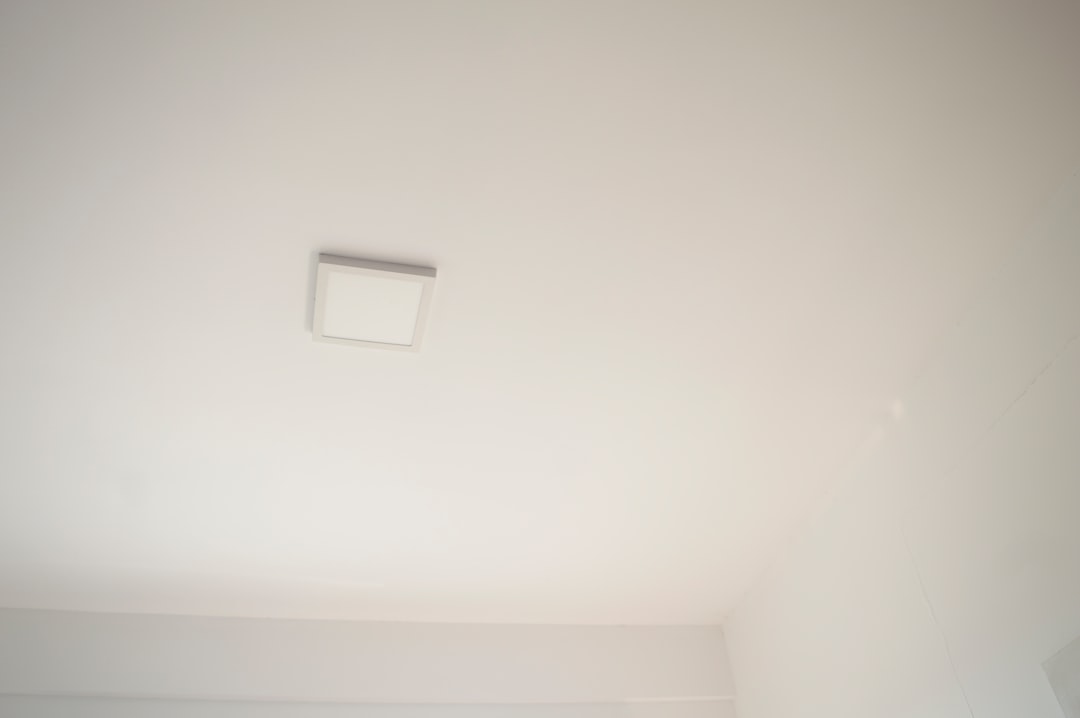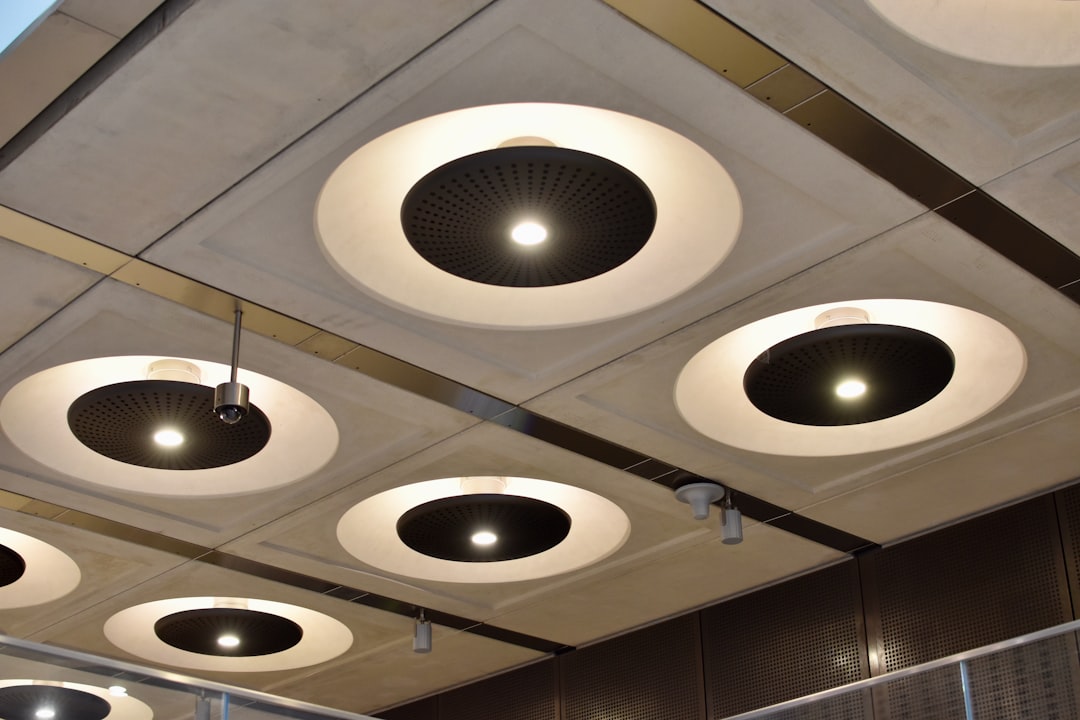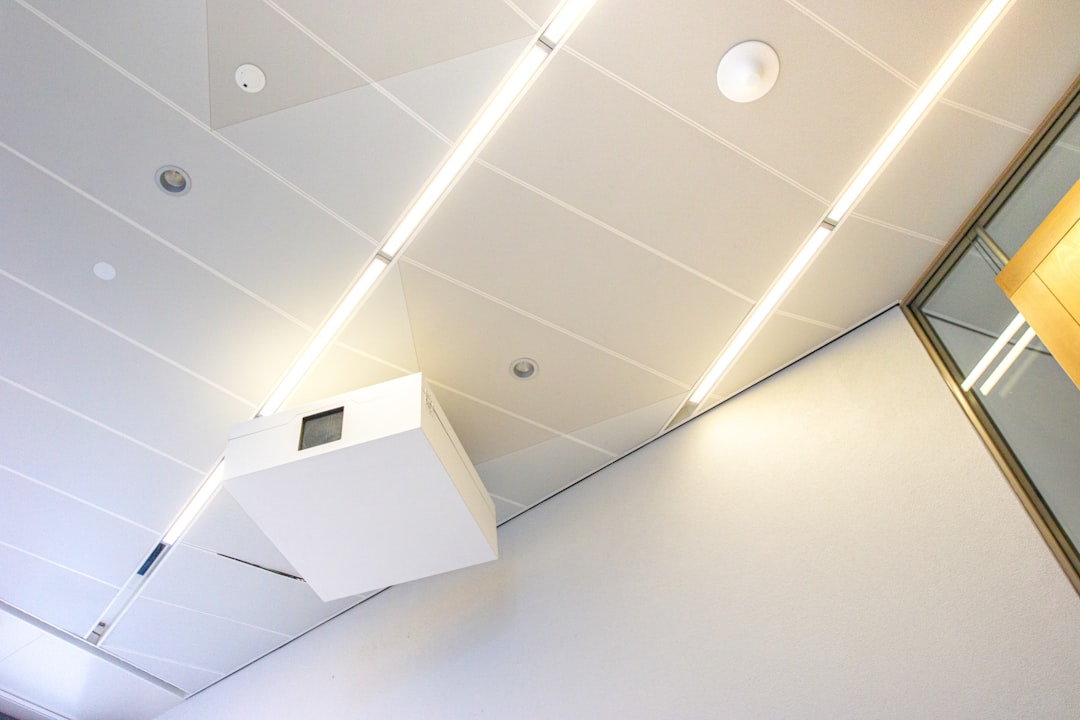

Engage prospects with a scan and streamline customer engagement with FREE QR code marketing tools by Sona – no strings attached!
Create a Free QR CodeFree consultation

No commitment

Engage prospects with a scan and streamline customer engagement with FREE QR code marketing tools by Sona – no strings attached!
Create a Free QR CodeFree consultation

No commitment
Ceiling contracting services face a unique marketing landscape: projects are high-stakes, competition is intense, and the buyer journey often starts offline with site visits, trade expos, or direct referrals. Traditional marketing methods like print brochures, yard signage, and static billboards create a difficult gap between initial interest and actionable leads, leaving many firms struggling to connect early client attention to measurable pipeline growth. This lack of traceability not only results in missed high-value prospects who never make it into the CRM but also amplifies the challenge of proving which marketing initiatives truly drive revenue. QR code marketing bridges these gaps, empowering ceiling contractors to instantly connect offline engagement to digital touchpoints and making every jobsite interaction a potential conversion.
For professionals seeking innovative ways to increase leads, streamline client communications, and gain deeper customer insights, QR codes provide an accessible entry into measurable, data-driven workflows. With QR-enabled processes, ceiling contractors can address a frequent industry pain point: the delay and inconsistency of capturing prospect information. Without needing app downloads or complex onboarding, a single scan can turn a passerby, trade show attendee, or building owner into a qualified lead, delivering actionable data to your CRM for more immediate and targeted follow-up. This not only accelerates the buyer’s journey but also helps prevent the lost opportunities that occur when valuable leads go untracked or pursued too late.
This guide explores how QR coding can transform ceiling contracting services by replacing fragmented analog processes, reducing missed connections, and equipping marketing leaders with tools to measure every stage of engagement. Discover practical methods to leverage these solutions for better customer acquisition, job management, and improved retargeting, enabling ceiling contractors to address longstanding industry challenges and drive sustainable growth. Explore related use cases for inspiration.

Ceiling contractors frequently struggle to capture high-value prospects who engage with site signage or estimates but never submit their contact information, resulting in lost opportunities and an incomplete sales pipeline. QR codes bridge this critical gap between physical spaces such as job sites, estimates, and compliance documentation and digital conversion funnels that enable scalable lead generation, as covered in Sona’s Essential Guide to Offline Attribution.
To translate anonymous attention into qualified pipeline, start by mapping every physical touchpoint to a single next action. For example, a branded QR on a vehicle wrap can route visitors to a prefilled quote form, while a code on inspection paperwork can trigger a review flow and warranty registration. Replace sluggish analog steps like paper sign-in sheets, basic business cards, and static brochures with QR-enabled journeys that capture data immediately and reduce friction for clients. The result is faster responses, fewer manual errors, and improved attribution from scan to signed contract.
By transitioning from static brochures and paper forms to QR-enabled journeys, ceiling contractors drive higher conversion rates, minimize manual entry errors, and create a measurable path from first scan to closed contract. Sona QR is built to support every step of this transformation, from code creation to attribution dashboards. Learn more about Sona QR.

The ceiling contracting landscape faces rising expectations for provable marketing ROI and urgent response to jobsite inquiries. Traditionally, anonymous or walk-in interest from trade shows, site signs, or print ads often remains untracked, leaving marketing and sales uncertain about the genuine impact of their spend. Project-based work also requires accurate documentation and fast communication across multiple stakeholders, which makes scan-to-action workflows especially valuable. For context on industry adoption, see these best practices and the documented benefits for construction.
QR codes bring visibility and speed to the moments that matter. They connect a jobsite banner to a mobile quote form, an estimator’s leave-behind to a project gallery, or a compliance sheet to a digital credential pack. Clients can act immediately without searching for a website or typing a URL, which shortens response time and reduces lead leakage. Contractors gain traceable touchpoints and a clearer view of what is working across print, events, and field operations.
As ceiling contracting moves beyond analog paperwork, QR codes act as a gateway to measurable demand generation and engagement tracking across every customer interaction. From appointment cards and inspection notices to billboards near industrial parks, QR-backed assets finally make offline media accountable.

Ceiling contractors frequently miss engagement signals or fail to capture job-specific interest due to fragmented information channels. QR codes offer multiple formats that streamline communication while increasing lead visibility across sales, field operations, and compliance.
For ceiling contractors, the most useful formats are web links for quote requests and scheduling, PDFs for compliance and warranty materials, and SMS or email for urgent service requests. With Sona QR, you can generate and manage all of these formats in one place, then update destinations as project scopes evolve.

A significant share of ceiling contracting leads goes untracked when client interactions at job sites, vehicle signage, or mailers do not prompt follow-up. QR codes turn these invisible touchpoints into measurable gateways that capture intent at the precise moment someone is ready to act.
Start by reviewing your existing physical assets and identifying where a scan could replace friction. Yard banners, van graphics, brochures, inspection reports, and warranty stickers are often overlooked sources of demand. A QR code on a ceiling tile replacement checklist can route facility staff to a replenishment form, and a code on a maintenance poster can bring recurring service leads back to your team rather than a search engine. For more ideas tailored to contractors, see this contractor guide.
Careful integration on compliance documents and job management forms not only tracks every client touch but also flags accounts for upsell opportunities and proactive retention efforts. Over time, your scan data reveals which placements generate the best conversations and where to double down.

Persistent industry challenges such as delays in capturing lead information or missing upsell indicators find practical solutions in thoughtful QR code deployment. Focus on use cases that connect offline attention to fast, relevant digital actions. For additional inspiration, check out seven creative methods contractors are using today.
You can extend these use cases into specialized niches. In healthcare and education projects, codes on ceiling access panels can link to safety protocols and maintenance logs. In commercial fit-outs, codes on temporary lobby signage can lead to a timeline of upcoming work phases and an opt-in for tenant updates. Each use case ties a clear action to a business outcome, which makes measurement straightforward.
Ceiling contracting businesses often lose track of leads following brief offline interactions, resulting in weak retargeting capabilities and generic, poorly timed ads. Each QR scan is a signal that contains context such as location, timing, and inferred project type. By deploying multiple QR codes across touchpoints, you can segment your audience automatically and increase the precision of your nurture programs. For a tactical playbook on this, see Sona’s Playbook intent-driven retargeting.
Start by assigning a unique QR code to each stage of the buyer journey. Awareness codes on vehicle wraps might direct to a project gallery, consideration codes on brochures might direct to pricing guidance, and conversion codes on quotes might direct to estimator scheduling. Every scan appends tags like “healthcare renovation interest” or “urgent repair” to the contact record, which informs follow-up content and ad sequencing.
With Sona QR, each code becomes a smart entry point into your funnel and each scan becomes a tagged event you can act on. For ceiling contractors, common audience distinctions include facility managers versus building owners, emergency repair seekers versus planned renovation planners, and single-site clients versus multi-location accounts.
A primary frustration in ceiling contracting is the inability to link clients' offline engagement to actionable digital journeys, which complicates attribution and budgeting. QR-coded materials unify your channels by making print, events, and field operations trackable, while also reducing friction for prospective clients who prefer to act on the spot.
To get the most from your media mix, make QR the connective tissue between offline touchpoints and your digital ecosystem. Use consistent CTAs, consistent branding, and destination pages that match the promise of the scan. For instance, if a vehicle wrap says “Scan to schedule an estimate,” the destination should be a one-minute booking flow, not a generic homepage.
QR codes serve as the offline onramp to your digital marketing engine and unlock a new layer of data collection across previously difficult-to-measure channels. With a centralized platform like Sona QR, you can manage codes, monitor performance, and sync scan data with your CRM and ad platforms to inform creative and budget decisions.
Define the primary campaign goal and the exact moment of action you want to enable. For ceiling contractors, strong candidates include immediate repair requests at managed properties, estimate scheduling from jobsite signage, and review capture at project completion. Tie the use case to a measurable outcome like reduced response time or increased form submissions.
Map the offline touchpoint and scanning environment. A code on a vehicle wrap will be scanned at a distance, so it needs a short URL and a large, high-contrast design. A code on a completion certificate can be smaller and include additional instructions since it will be scanned up close. When you understand where and how scanning will occur, you can design the experience to fit the context.
Use dynamic, trackable QR codes for all campaigns that require flexibility, analytics, or retargeting. Dynamic codes let you update the destination after printing, add UTM parameters, and attribute revenue to specific assets or placements. Static codes are acceptable for fixed content like a general service brochure, but they limit insight and agility.
Match the format to the action. Web link codes are best for quotes and scheduling, SMS or email codes for urgent repairs, and PDF codes for compliance packs and warranties. If you maintain a client app, consider using device-aware app download codes for property managers who want mobile access to job updates. For urgent communications, consider SMS QR codes.
Incorporate brand elements and a clear call to action. Use a strong frame, ample white space, and high color contrast to maximize scannability. Add a concise benefit-driven CTA like “Scan for service now,” “Scan to book a walkthrough,” or “Scan for compliance documents.” For vehicles and site banners, keep CTAs short and legible from a distance.
Test codes across devices, angles, and lighting conditions common at jobsites. Validate on iOS and Android, verify performance in bright sunlight and low light, and confirm that smaller codes can be scanned with older phone models. If a code will live on metal signs or glossy surfaces, test for glare and consider matte finishes to improve reliability. Always verify that the landing pages are mobile-optimized and load quickly on cellular networks.
Maximize exposure by placing codes where decision makers naturally engage. For ceiling contractors, prioritize service vehicles, project fences, entry lobbies, estimator leave-behinds, inspection reports, and direct mailers to local property managers. Align the call to action with the likely intent at each placement. An estimator handout should promote booking a site assessment, while a maintenance poster should emphasize emergency contact.
Sequence your rollout and measure incrementally. Start with two or three placements, gather baseline scan and conversion data, then expand to additional assets like trade show booths and sponsorship banners. Use unique codes for each placement to isolate performance and identify which media deserve more investment.
Monitor scan volume, conversion rate, and downstream revenue for each code. Connect activity to actual leads in your CRM and analyze conversion paths, drop-off points, and time-to-response. A/B test code frames, CTAs, and landing page elements like form length, headline clarity, and trust badges to improve results. For reporting alignment, explore insights in Sona’s blog on pipeline influence.
Use insights to refine targeting and creative. If certain neighborhoods or property types convert better, localize messaging and shift budget accordingly. If one estimator’s follow-ups close faster, route similar inquiries to that team. With Sona QR, you can view performance by asset and location, then push insights into Salesforce or HubSpot to orchestrate next-best actions automatically.
A widespread issue in ceiling contracting is the inability to tie offline engagement like site visits, estimates, and job paperwork to booked revenue. Without multi-touch attribution, it is difficult to justify marketing spend or understand how prospects move from awareness to signed contract. Modern QR tracking provides that missing link by converting every physical interaction into measurable digital data.
Effective analytics start with structured code deployment. Assign a unique dynamic code to each asset, add UTM parameters for source and medium, and route scans through mobile-friendly pages that align with the user’s intent. Track the scan, the conversion that follows, and the sales outcome associated with that lead. Over time, you can identify the placements and messages that consistently drive pipeline.
With Sona QR and Sona.com, ceiling contractors can centralize offline-to-online data and implement identity resolution across sessions and devices. Sona’s Buyer Journeys link QR scans to downstream web behavior and CRM activity, which helps teams understand the lift created by scan-to-action workflows and where to invest next for measurable impact.
Scaling QR success requires discipline in attribution, clarity in calls to action, and a culture of promotion across the field and office. While the technical setup is important, the biggest gains come from thoughtful deployment and consistent follow-up.
Issue unique QR codes for every print asset and channel, then append UTM parameters to each destination. This provides the data structure you need for trend analysis and retargeting. Train your teams to invite scans and reinforce the value of acting now, whether that means scheduling an estimate, registering a warranty, or leaving a review.
Consider creative deployments that align with your workflow. Place QR codes on drop cloths used in occupied spaces so occupants can report issues without chasing down staff. Add codes to ceiling tile packaging or stockroom shelves to streamline reordering. The more you anticipate real-world moments of need, the more value your QR program will create.
The integration of QR codes into ceiling contracting services transforms everyday assets like signs, invoices, handouts, and vehicles into always-on business channels. Each scan is an actionable data point that accelerates lead qualification, surfaces previously hidden opportunities, and connects analog marketing with digital analytics. When codes are paired with clear calls to action and a disciplined follow-up plan, they compress timelines from first interest to scheduled estimate and from job completion to glowing review.
For ceiling contracting services, leveraging QR code marketing is more than a technical upgrade; it is a strategic response to industry challenges like missed high-value leads, fragmented communication, and lack of ROI clarity. By connecting every offline touchpoint to a digital workflow, firms can improve lead capture, accelerate response times, and gain new levels of campaign visibility. With Sona QR, you can generate and track your first codes in minutes, then use Sona.com to attribute outcomes and refine your media mix. Start creating QR codes for free.
QR codes have revolutionized the ceiling contracting services industry by transforming how professionals connect with clients and manage projects. From streamlining access to detailed job information to enhancing customer communication, QR codes enable faster, more transparent interactions that drive trust and efficiency. Imagine instantly sharing project updates or maintenance records with clients through a simple scan—boosting satisfaction and repeat business.
With Sona QR, you get dynamic, trackable QR codes that can be updated on the fly without reprinting, allowing you to adapt campaigns and client touchpoints seamlessly. Every scan provides actionable insights, helping you identify which communications lead to new contracts and improved client retention. Start for free with Sona QR today and turn every scan into a stronger client relationship and a step toward your next successful ceiling project.
Ceiling contracting services can use QR codes by placing them on physical touchpoints like vehicle wraps, site signage, estimates, and compliance sheets to connect offline engagement directly to digital actions such as quote requests, warranty registration, and review submissions, enabling instant lead capture and measurable follow-up.
Incorporating QR codes provides benefits like bridging the offline-to-online gap, enabling instant customer access without app downloads, allowing dynamic content updates, delivering robust attribution of marketing efforts, lowering operational costs, and improving lead conversion and tracking.
QR codes help generate leads by turning physical interactions at job sites, events, or printed materials into immediate digital conversions, capturing prospect information quickly without manual entry, and delivering actionable data to CRMs for faster and targeted follow-up.
Effective uses include placing QR codes on vehicle wraps, jobsite signage, brochures, inspection reports, trade show materials, and warranty stickers to route prospects to quote forms, emergency repair requests, project galleries, compliance documents, or review submissions.
A ceiling contracting service can stand out by deploying unique, trackable QR codes with clear calls to action tailored to specific touchpoints, enabling seamless offline-to-online engagement, faster response times, and data-driven marketing decisions that improve customer acquisition and retention.
Use Sona QR's trackable codes to improve customer acquisition and engagement today.
Create Your FREE Trackable QR Code in SecondsJoin results-focused teams combining Sona Platform automation with advanced Google Ads strategies to scale lead generation

Connect your existing CRM

Free Account Enrichment

No setup fees
No commitment required

Free consultation

Get a custom Google Ads roadmap for your business






Launch campaigns that generate qualified leads in 30 days or less.
